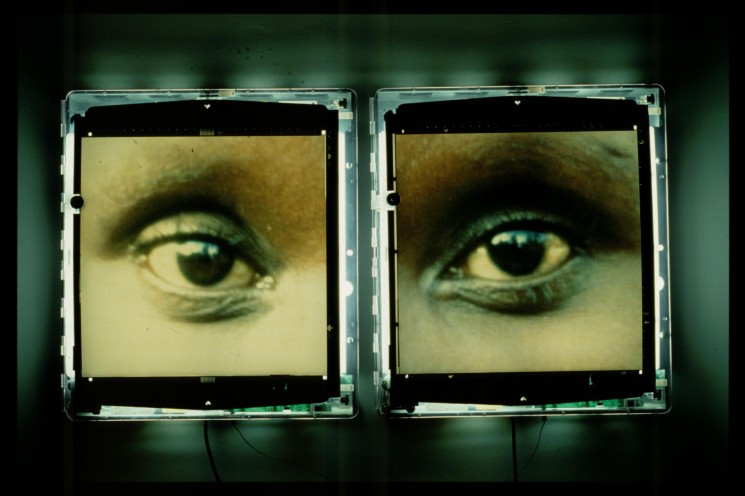Alfredo Jaar
Eyes of Gutete Emerita

“I realized that I couldn’t use them. It didn’t make sense to use them; people did not react to these kinds of images. Why would they react now? I was starting to think that there must be another way to talk about violence without recurring to violence …”
Alfredo Jaar (born 1956) is one of the most uncompromising contemporary artists. He addresses political, social, and economic topics that reflect the often complex and seemingly unjust relations between the first world and developing countries. Jaar’s diverse topics range from racism and immigration to the exploitation of natural and human resources. Jaar received special attention following his Rwanda project that investigated the genocide against the Tutsi minority (1994-1998). Additionally, many of his works combine a media critique with the charge of lacking objectivity and conscious deception of the public.
In the beginning of his career Jaar was influenced by the artistic practice of Conceptual Art of the 1960’s and artists like Marcel Duchamp and Joseph Beuys. His Latin American roots become visible in his claim for political engagement. Jaar uses various media but his photographic works and light boxes have become his trademark.
Since the 1980’s Jaar’s works have been exhibited worldwide (Venice Biennial 1986, 2007, 2009, 2013; documenta 1987, 2002) and he was given many solo exhibitions (New Museum of Contemporary Art, New York; Whitechapel Gallery, London; Museum of Contemporary Art, Chicago; “Moderna Museet”, Stockholm; and “Alte Nationalgalerie”, Berlin).
“Eyes of Gutete Emerita” from 1996 is probably the most haunting work of Jaar’s famous Rwanda Project about the genocide in this African state and for some one of the most important works of art about war and violence that has been created in the last thirty years.
When the artist visited Rwanda in August shortly after the genocide in 1994, he travelled to Kigali, where the violence was centred. He went to the Ntarama Church, where four hundred Tutsi men, women, and children had gathered to escape the killing and instead were brutally slaughtered shortly after. There Jaar met a woman named Gutete Emerita, who had to witness the slaughter of her husband and sons murdered in front of her eyes. Somehow she was able to escape with her daughter.
Jaar made the very conscious decision not to use any images of the carnage, the bodies that still lay rotting at the site; instead he describes it in text choosing the medium of the lightbox with alternating transparencies. At the end he shows the eyes of the woman, whose expression he cannot forget. This is essential for Jaar’s artistic approach, not to confront the viewer directly with the atrocities of the genocide, but to face her/ him with the gaze of a survivor, who has been a direct witness to something it is impossible to bear witness to.
Alfredo Jaar’s work leads us to question the efficacy of words over photographic images, as well as the way in which they interact to create meaning outside the boundaries of one medium. Jaar explains: “If I spent six years working on this project, it was trying different strategies of representation. Each project was a new exercise, a new strategy, and a new failure… Basically, this serial structure of exercises was forced by the Rwandan tragedy and my incapacity to represent it in a way that made sense.” After finishing the Rwanda Project Jaar nearly ended his artistic career.”